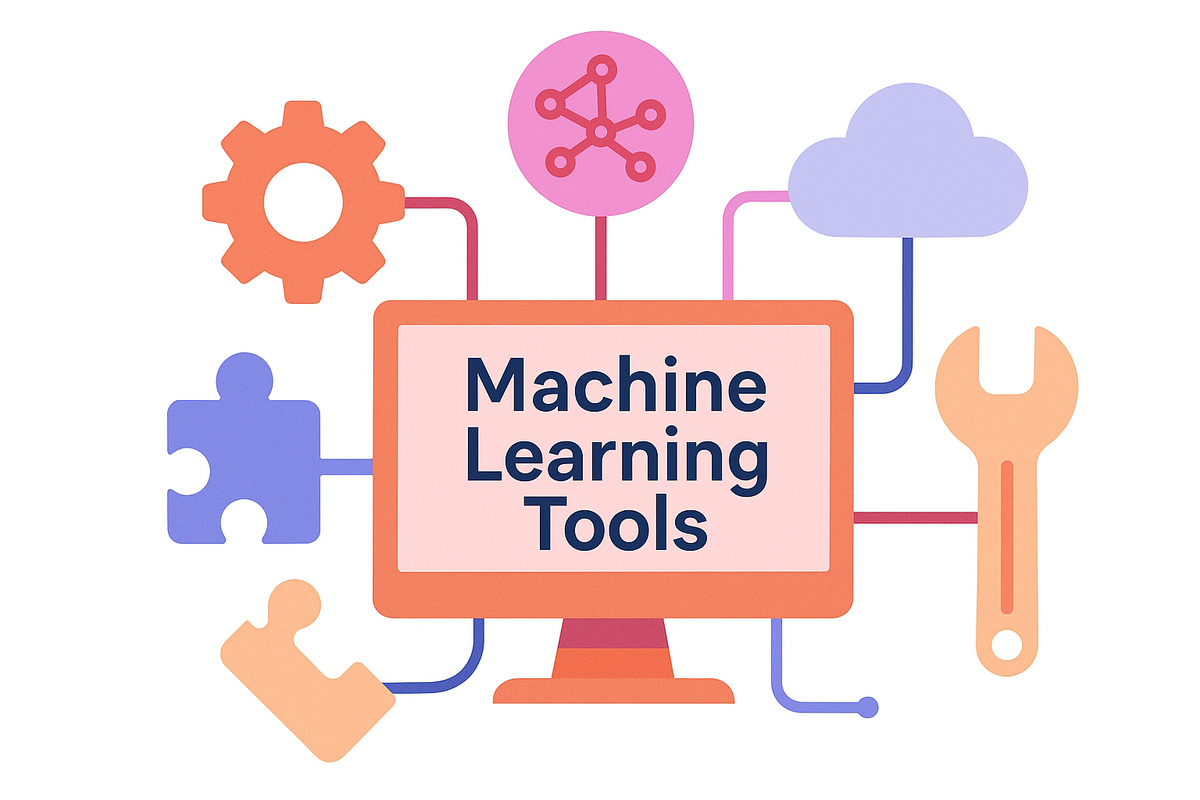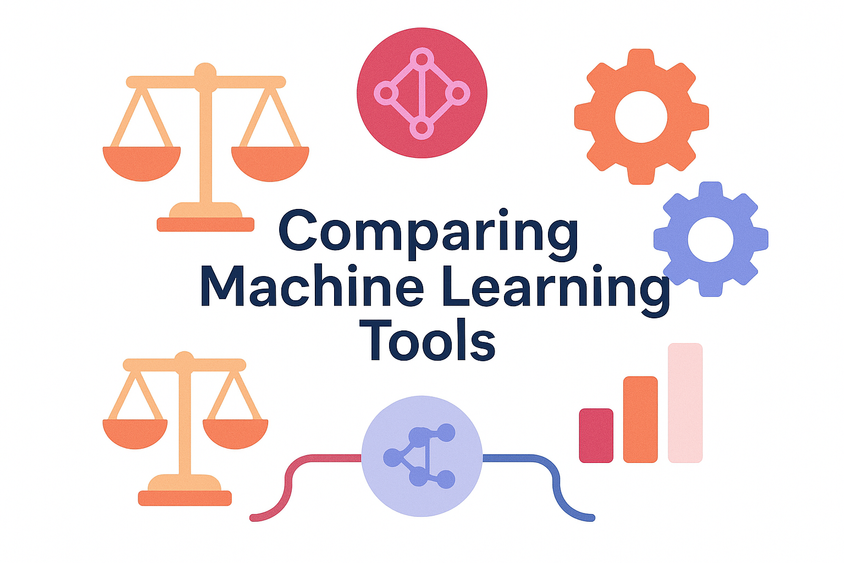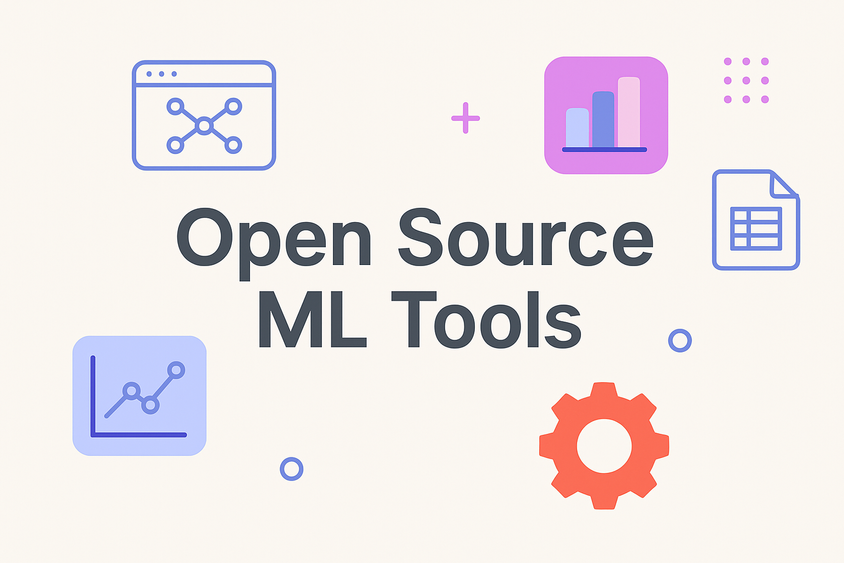A Guide to Machine Learning Tools

Machine learning (ML) has moved from niche innovation to enterprise necessity. But building intelligent systems requires more than just great models—it demands a reliable, flexible, and well-integrated toolstack.
This guide explores the machine learning tools that power modern AI workflows. Whether you're an MLOps engineer scaling infrastructure or a data scientist prototyping new models, this is your starting point to understand the landscape.
What Are Machine Learning Tools?
Machine learning tools include the platforms, frameworks, and utilities used across the ML lifecycle—from data preparation and model training to deployment and monitoring. Some are comprehensive platforms; others focus on solving specific challenges like data labeling, experiment tracking, or model serving.
Choosing the right combination of tools is key to building repeatable, reliable, and scalable ML workflows.
Categories of ML Tools
1. ML Platforms
Machine learning platforms offer end-to-end environments where teams can develop, train, deploy, and monitor models without stitching together multiple systems. These platforms often include:
- Visual interfaces for dataset management and pipeline orchestration
- Integration with popular frameworks like TensorFlow or PyTorch
- Built-in tools for versioning, collaboration, and deployment
They’re ideal for teams looking to reduce DevOps burden and streamline model iteration. Some platforms are open source and self-hosted; others are cloud-native with enterprise-grade support.
2. Open Source ML Tools
Open source tools have shaped the foundation of modern ML. Libraries like scikit-learn, XGBoost, and Hugging Face Transformers are widely adopted because of their flexibility, community support, and transparency.
They’re often the first choice for research-driven teams or those needing fine-grained control over model internals. While powerful, open source tools typically require more effort to integrate, manage, and scale in production.
3. ML Pipeline Tools
Building a robust ML pipeline involves far more than training a model. You need to manage data ingestion, feature engineering, model training, evaluation, deployment, and monitoring—often across multiple systems and teams.
Pipeline tools like MLflow, Kubeflow, and Metaflow help orchestrate these workflows. They provide:
- Version control for datasets and models
- Workflow orchestration across cloud and on-prem environments
- Support for reproducibility, experiment tracking, and rollback
These tools are essential for scaling ML in production environments and maintaining model reliability over time.
[Learn more: ML Pipeline Tools for Scalable Workflows →]
4. Specialized ML Tools
Not every team needs a full-stack ML platform. Many choose to complement their stack with lightweight, specialized tools for tasks like:
- Data labeling and annotation (e.g. Label Studio)
- Model interpretability and bias detection
- Evaluation and benchmarking
- Human-in-the-loop validation
These tools offer targeted functionality that can plug into existing workflows. Choosing the right ones often depends on your data type, project scope, and governance needs.
How to Choose the Right ML Tools
With so many options, how do you build the right toolstack? Start with these questions:
Who’s using the tools? The needs of a research scientist differ from those of an MLOps engineer. If your team spans roles, look for tools that support collaboration across personas.
How mature is your ML program? Early-stage teams may benefit from all-in-one platforms with quick startup times. Mature teams often want modularity, extensibility, and integrations with internal systems.
What kind of data are you working with? Different modalities—text, images, tabular, time series—have different requirements. Some tools specialize in handling specific formats or annotation types.
Do you want to build or buy? Open source tools offer freedom and control, but come with setup and maintenance overhead. Commercial platforms offer managed infrastructure and support—but can limit customization or become costly over time.
How important is scalability and governance? If you're preparing for production deployment, look for tools that support versioning, audit trails, and CI/CD for models. Without these, your workflows may break under the pressure of scale.
For more advice on making the right decision:
Trends in ML Tooling
The ML tooling ecosystem evolves fast. In the past year alone, we've seen:
- The rise of low-code platforms that let non-technical users train models
- Greater integration with LLMs and generative AI workflows
- Increased focus on observability, reproducibility, and ethics in tooling
- Hybrid stacks combining open source infrastructure with enterprise orchestration
Staying ahead means continuously evaluating what your current tools can (and can’t) support.
Conclusion: Build Smarter, Not Just Faster
No matter your team’s size or domain, the right machine learning tools can accelerate development, improve model performance, and reduce operational headaches. As you grow, so will your need for tools that support experimentation, automation, and governance.
Try Label Studio and start your free trial today.

